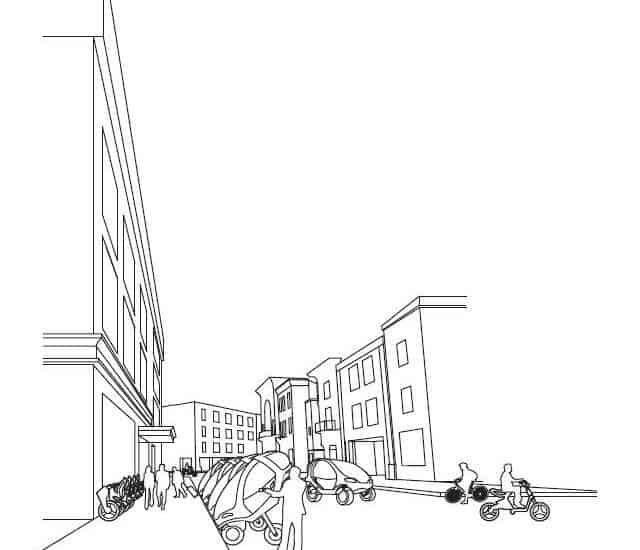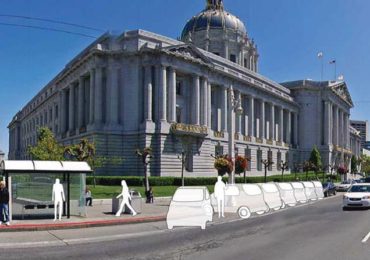Private automobiles in the past century have changed the standard of personal urban mobility by facilitating door to door travel options in cities around the world. However, this mobility system has posed various challenges to factors such as its dependence on oil, production of greenhouse gases, congestion, and ever-increasing demand for parking spaces. Recently, it has been speculated that Autonomous Mobility could be a solution to tackle these challenges. Self-driving vehicles are said to provide flexible and clean solutions which can be adapted to the existing modes of transport networks in the city to provide the best door to door service to the citizens. There are various mobility strategies that could be adapted to accommodate self-driving vehicles in our daily life. On Demand mobility is one such strategy that has been speculated to bring out the best possible results for the implementation of Autonomous modes of transport. This article will explore the concept of On- demand mobility and its advantages in association with self-driving vehicles.
Related: Autonomous Mobility and the Sharing Trend
On Demand Mobility
On demand mobility system is a strategy for future personal urban mobility. The concept is that of providing a one-way vehicle sharing using light weight electric vehicles. These types of vehicles are usually provided in the form of stacks or racks at closely placed accessible points throughout the city. It allows the citizen to simply walk to their nearest vehicle stack and with a help of a smart card system, pick up the vehicle of their choice and travel to their destination and drop it off at the rack nearest to the selected destination.

These stacks/ rack are not only equipped with light weight vehicles, but are also provide access to the recharging points, security, and transactions for these vehicles to provide a quick service for the users. These stacks vary in scales. While some are small and informal, others might be present at city scale with access to other modes of transit such as trains, buses etc. Based on the success of this system, these stacks/ racks can be positioned to accommodate the increasing demand and increase the density of coverage.
This mobility strategy aims to provide solutions to the challenges the current personal mobility solutions pose such as pollution, congestion, demand for parking spaces etc. Mobility on Demand systems are also flexible to adapt to ride sharing services such as carpooling. The recent rise of ride sharing, car sharing and last-mile services is just the foundation of a comprehensive move from personal vehicle ownership to a shared, on-demand model.
According to the Economist
vehicle sharing will decrease car ownership at an estimated rate of one shared vehicle replacing 15 owned vehicles.
The citizens using the on-demand services, have the benefits of using personal mode of transport without the related costs of ownership, fuel, insurance, and other such services. Some of the important factors to be considered for the on-demand mobility strategy to work are:
- Costs for the users
- Trip origin studies
- Origin destination studies
- Accessibility analysis
- Building trust with crucial stakeholders such as consumers, regulators, insurers, investors etc.
Related:Origin & Destination Survey Methods

A well organized and managed on demand mobility system will essentially provide more attractive and economical combinations for the users along with alternative modes of transport such as the transit systems.
Autonomous Vehicles and On Demand Mobility
It has been speculated that MoD systems will optimize the use of Autonomous Mobility because:
- The light weight autonomous vehicles can rebalance themselves
- These vehicles can reach charging stations when needed,
- Enable system-wide coordination meant to throughput optimization.
- They can free passengers from the tiring driving experience and provide an option of personal mobility to those who cannot drive or are unwilling to drive
- Increased Safety
These benefits have motivated various companies around the world and the automobile manufacturers to pursue the Autonomous Mobility on Demand strategy for the cities of future. Increasing development in the vehicle automation sector along with the developing interest in economic and societal implications of the MoD systems have fired up debates regarding the economic and societal value of AMoD.
But the questions that arise today are:
- How many light weight vehicles would be needed to achieve a certain quality of service?
- What costs would be incurred for the operation of these vehicles?
- Will AMoD systems tackle the challenges posed by personal mobility systems today?
- Will this mobility strategy be economically viable, sustainable, and societally-acceptable solution to the future of personal urban mobility?
These questions can provide motivation to transport planners and urban designers around the world to prepare our cities today for the future in the age of autonomous mobility
Author Bio: Bhavana Vaddadi is a fresh masters graduate from Delft university of technology, The Netherlands.She did her undergraduate studies in Faculty of Planning from Center for Environmental Planning and Technology, Ahmedabad. Her major interest lies in the field of Urban Mobility and the arrival of Intelligent transportation systems in the future.